Tech Reviews: FAST Plugins
Tim Hallas
Tuesday, June 1, 2021
MT's technology editor Tim Hallas tries out FAST plugins and shares his thoughts
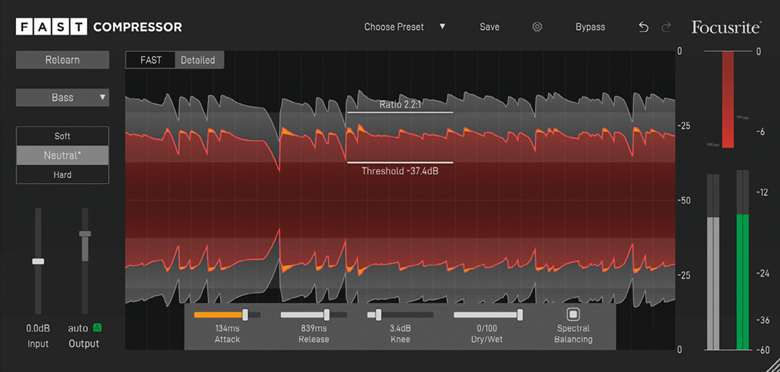
It's an interesting phenomenon that AI seems to be the latest thing permeating music technology equipment at the moment. Possibly elsewhere too, but I don't know about anything else. Over recent months I've covered several things in the New Products section that incorporate AI or augmented reality (including LALAL.AI this month).
However, the FAST plugins from Focusrite are the first products I've properly reviewed that use AI to operate. There are three plugins in the suite: a compressor, an EQ and a ducking mixer. We'll explore each of these in turn and explain what they do and how they work.
The aim of the FAST series is to allow anyone to apply some audio processing to their audio without having any knowledge or experience of music production. Compression, in particular, can be considered a dark art for those with little experience in music production, and Focusrite is aiming to take some of that mystery out of production techniques.
The plugins have been fed gigabytes of audio data to train the system on how certain instruments and voices should sound, and which settings will generate pleasing responses. The FAST plugins then use this information to create the ideal setting for your audio. The idea is that you play the plugin some of the audio that you want it to process, it analyses the incoming signal and uses its built-in knowledge to create an appropriate setting for your audio. In theory, a great idea – but does it work?
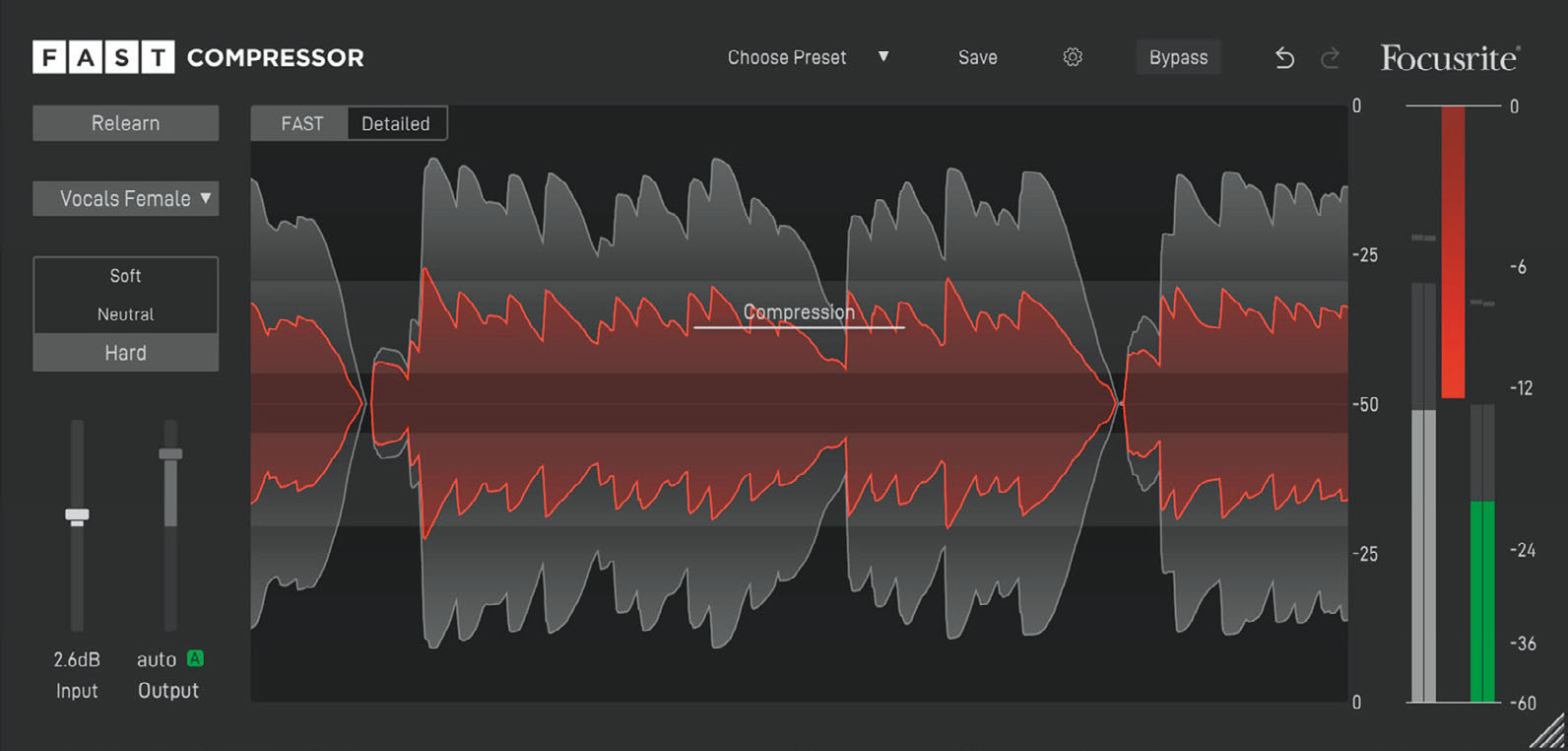 The FAST compressor uses AI to create appropriate settings
The FAST compressor uses AI to create appropriate settings
Compressor
The first experiment I tried was with the compressor. I opened it in my DAW of choice and placed it on a vocal track. The advantage of these plugins having a specific target audience of ‘inexperienced users’ is that they walk you through every stage of the process. Once opened, it instructs you which buttons to press and how to choose the best matched options for the incoming audio.
The plugin then analyses the audio and creates some appropriate settings. I was pleasantly surprised at how well it worked. The settings were pretty accurate and the vocal sounded good. I would have compressed the track a little more, but that's a personal preference, and there is no reference for the plugin to know what sort of music I was creating at the time.
Once it has done this, you can either leave it as it is, or you can explore the ‘Detailed’ settings which takes you into the deeper plugin controls to allow you to fine tune the sound to taste. All the usual compressor controls including Threshold and Ratio can be found here if you are confident enough to use them.
EQ
The EQ plugin works in a similar way, with the walkthrough process to get the right setting for the AI engine. Again, this sounded pretty good; the choices it made on the audio I fed were appropriate and it gave the part some nice enhancements.
Once the plugin has adjusted the different frequencies, you can see the boosts and cuts it has made to the different elements making up the sound. The feature on this plugin that I particularly liked was that it broke the frequencies up into different elements that would make sense to non-technical people. So, for vocals, the different elements of the sound were broken up into ‘sibilance’, ‘nasal’ and ‘body’, and drums were divided into ‘knock’, ‘thump’ and ‘snap’.
As with the compressor, the ‘Detailed’ view contains access to all the usual functions I'd expect to see on a parametric EQ, including controls for the frequency, gain and bandwidth. The ability to switch between this view and the main view containing the different elements of the sound make this a really useful teaching tool.
Reveal
The final of the three plugins is a slightly different beast and is something called a ducking mixer. The idea is that you feed two signals into it and it automatically adjusts the level of one to allow the other to sit more prominently in the mix. An example might be the volume of a bass slightly overpowering a vocal – Reveal should then adjust the level of the bass when the vocals are performing to allow it to be heard more clearly.
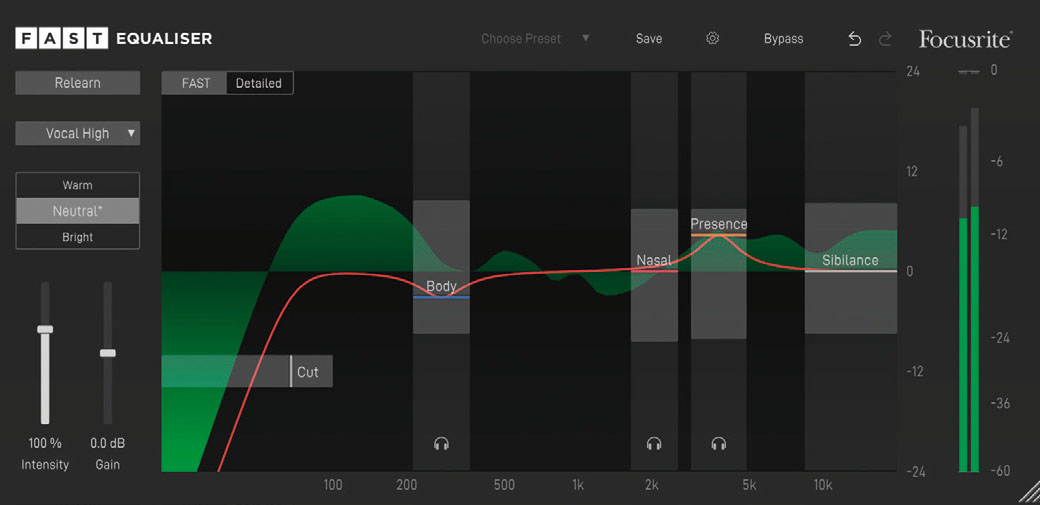 An AI-generated EQ curve for a vocal
An AI-generated EQ curve for a vocal
The setup on this plugin is a little more complicated and has more steps because it involves something called sidechaining (if you don't know what this is, it doesn't matter – that's the whole point of these plugins!), but as with the compressor and the EQ, Reveal takes you through the process step-by-step.
Once it has processed the two sounds, you are greeted with a spectral analysis of the two sound sources in different colours so that you can see the relative volumes. These can then be adjusted further to taste. If you feel that the AI has ducked the backing too much – then you can bring the volume back up again.
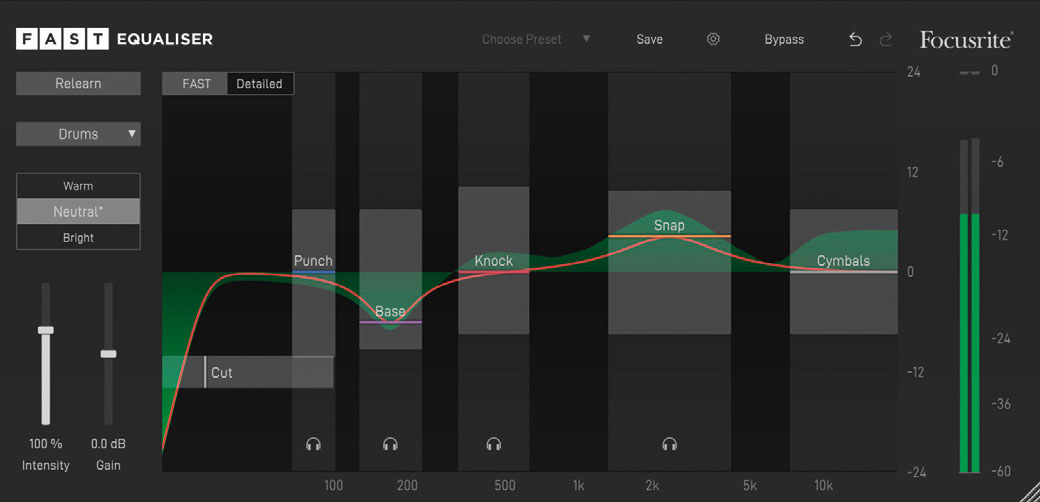 An AI-generated EQ curve for drums
An AI-generated EQ curve for drums
In my opinion, Reveal is the weakest of the three. It's ok, but it just doesn't work as well as I'd like it to or as well as the other two plugins in the range. This has real future potential for recording student performances when Focusrite does an update. If a student group perform their parts together and one of the performers (probably a guitarist) is too loud, Reveal could, theoretically, adjust the balance between the loud performer and everyone else. However, as I mentioned, for me it's not quite there yet and doesn't work as well as I think it might in the future. AI is an emerging technology and it's only going to get better.
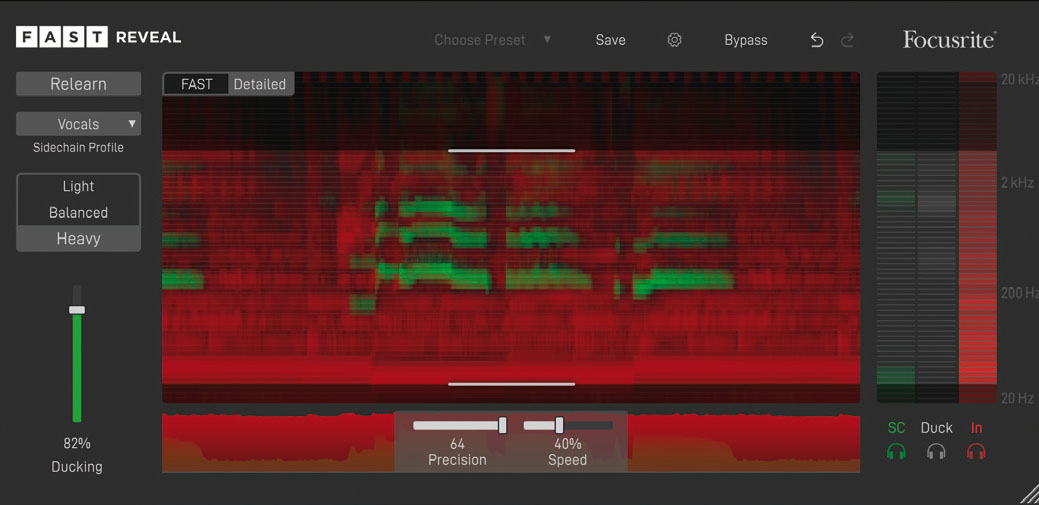 Reveal uses a spectral graph to show relative volumes
Reveal uses a spectral graph to show relative volumes
Purchase and install
The plugins are currently bought using a subscription model, the likes of which don't work very well in an education setting. However, there is an unusual caveat in that after 15 months, the plugin licences become permanent. There currently doesn't appear to be an education pricing, but Focusrite is traditionally very open to working with education establishments, so this might be imminent.
The plugins have a fully functioning demo version, which is actually the same as the paid for version. The only difference between the two is that the full version asks for a licence key and the demo stops working without it after a while.
This leads on to the final point here – the FAST plugins require an Internet connection every time they are used. This is to allow the plugin to connect to Focusrite to check the validity of the licence key. This is slightly annoying if you are working offline (WiFi in schools and recording studios is notoriously flaky) but is just a way for Focusrite to keep track of subscriptions.
Summary
These plugins are great, and they are ideally suited to the education market. I've written about lots of effects in these pages over the years that emulate this or that hardware – the FAST plugins do nothing like that. They are designed to be easy-to-use processors that allow greater access to high-end mixing. If you have some student recordings that just need a little ‘polish’ but you're not an experienced music technologist, then these could be for you.
In addition to working very well, the EQ and Compressor are excellent teaching tools for students wanting to learn about production. The AI can create some settings and then students can reverse engineer them. However you use them, these plugins are definitely worth exploring for a range of tasks in a music classroom.
The FAST plugins series costs £5.99 per month (unlimited after 15 months). For more information, visit www.focusrite.com

